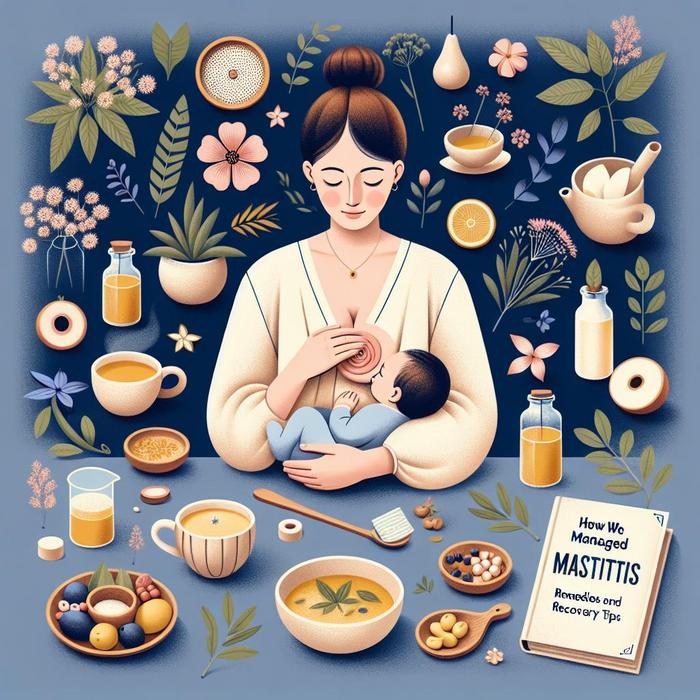Understanding Mastitis: Grappling with Breastfeeding Difficulties
As any new mom will tell you, breastfeeding isn’t always straightforward. One of the hiccups moms may face along the way is mastitis, a painful breast tissue infection. Let’s look at the options for treating mastitis and overcoming breastfeeding challenges.
Recognizing Mastitis: The First Step towards Management
Mastitis typically begins with flu-like symptoms such as fever and chills. You may also notice a painful area in one breast that’s red and swollen. Sometimes, these symptoms come on seemingly out of the blue, startling new moms. It’s crucial to identify these symptoms as early as possible to begin treatment and limit the discomfort. For a detailed description of mastitis symptoms, check out this resource.
Treating Mastitis: Combining Medical Care and Home Remedies
Firstly, always seek medical help at the onset of mastitis symptoms. Antibiotics are often prescribed to manage the infection. However, alongside medical treatment, there are several home remedies for mastitis you can use to mitigate the symptoms and promote recovery:
- Continued breastfeeding: It not only helps clear the infection but also ensures your infant’s nutritional needs are met. If direct breastfeeding is too painful, try expressing milk with a pump.
- Warm compresses: A warm cloth on the affected breast before feeding can improve milk flow and relieve pain.
- Proper positioning and attachment: Ensuring your baby latches on correctly can help prevent milk stasis, a major cause of mastitis. Consider consulting a lactation specialist for guidance.
- Rest and hydration: These are crucial for recovery from any infection, including mastitis.
For more information on mastitis treatments, see this exhaustive guide by Mayo Clinic.
Overcoming Breastfeeding Challenges: Don’t Hesitate to Seek Support
Dealing with mastitis can feel overwhelming, but remember – you are not alone. Reach out to your healthcare provider, lactation consultant, or a breastfeeding support group to navigate this challenging time. More information can be found here about managing the symptoms and challenges of mastitis.
In addition to mastitis, there are other potential hurdles in your breastfeeding journey, ranging from your baby’s first allergic reaction, to finding appropriate baby snacks, and safe use of essential oils for babies. You can find various resources and guides on our blog to help you navigate new motherhood. Be sure to check out our posts on handling your baby’s first allergic reaction, our favorite DIY baby snacks, and safe and effective use of essential oils for babies.
Remember, breastfeeding challenges like mastitis are typical and manageable with the right resources, support, and care. You’re doing an amazing job, momma. Let’s keep going!
Understanding Causes of Mastitis
Mastitis often occurs when bacteria enter the breast tissue through a cracked or sore nipple. This can happen if you have difficulty breastfeeding, your baby hasn’t properly latched on, or there’s an unfavorable change in feeding patterns. Infection may develop, causing severe inflammation and, in some cases, breast abscesses. For more on what might trigger mastitis, refer to the American Association of Family Physicians’ insights.
The best way to prevent mastitis is to ensure good breastfeeding technique. Remember, consistency plays a significant role in this process, and with the right guidance, both you and your little one can master this critical bonding ritual.
Complications and Long-term Effects of Mastitis
While prompt treatment effectively resolves mastitis in most cases, some women may experience complications. These include recurring mastitis, milk stasis leading to decreased milk supply, or formation of a breast abscess. Furthermore, untreated mastitis can lead to serious infections, including sepsis. You can read more about potential complications on the Cleveland Clinic’s mastitis page.
The good news is, with swift medical care and following recommended home remedies, you can quell this condition effectively and continue your breastfeeding journey without hindrance.
Prevention: The Best Course of Mastitis Management
Given the discomfort and potential complications that mastitis can cause, prevention is critical. Here are some practical steps to keep mastitis at bay while breastfeeding:
- Feed regularly: Breastfeed your baby frequently to prevent milk from building up in your breasts.
- Latching: Make sure your baby latches onto your breast properly to facilitate effective milk removal.
- Nursing Bra: Wear a correctly sized nursing bra that doesn’t constrict your milk ducts.
- Hygiene: Maintain your nipple hygiene to prevent bacteria from entering your milk ducts.
More details on preventive measures can be obtained from this comprehensive National Health Service (NHS) guide.
Emotional Impact of Mastitis and The Road to Recovery
Apart from physical discomfort, mastitis can take an emotional toll. Dealing with painful nursing sessions and coping with an infection can be stressful and cause feelings of anxiety or depression. It’s crucial to remember that it’s okay to seek help and take care of your emotional wellbeing. You can find advice on dealing with emotional aspects of mastitis on the University Hospitals’ blog.
Moving Forward After Mastitis
Recovering from mastitis not only signifies the end of physical discomfort but also a victory over a major breastfeeding challenge. Learn from the experience and use it to foster resilience for upcoming parenthood hurdles. And always remind yourself – you’re doing the best you can, and fluctuations in the breastfeeding journey are commonplace and part of the process.
Hopefully, this resource can help make your breastfeeding journey smoother, inspire you to bravely face all challenges, and motivate you towards achieving your breastfeeding goals with grace and determination.
